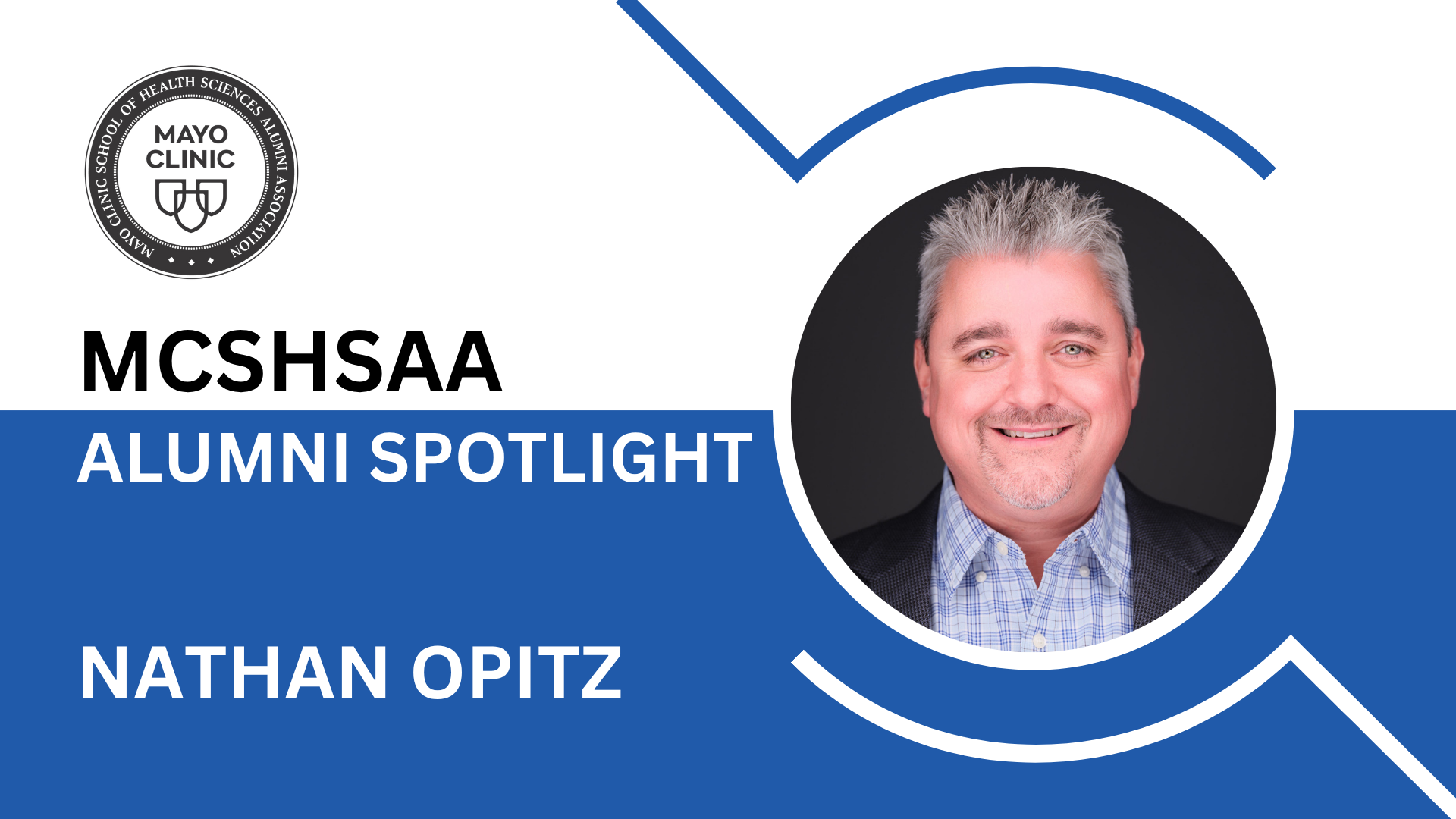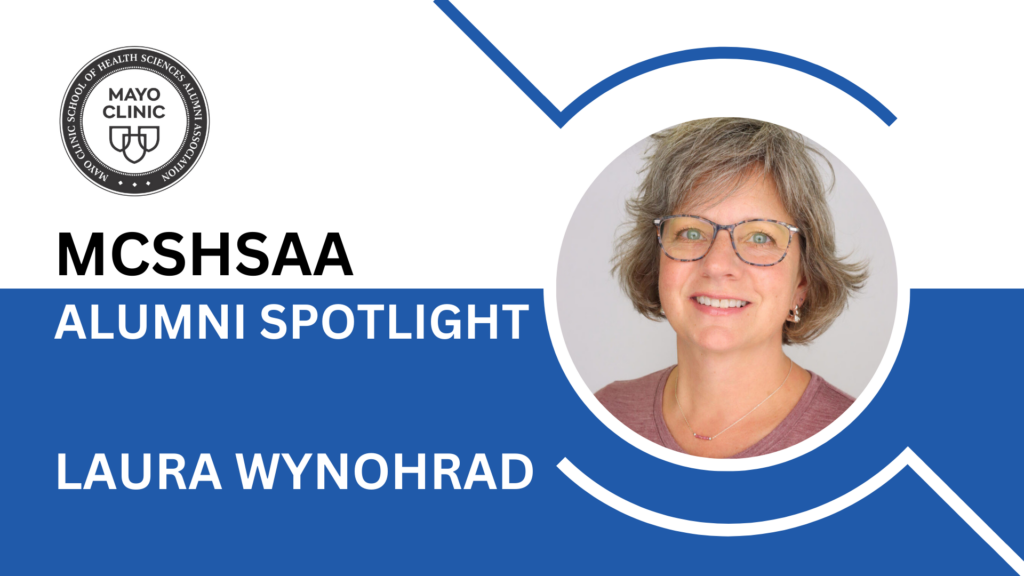For every path that starts at Mayo Clinic, there is an alumnus with a unique story to tell. Whether they continue their careers at Mayo Clinic or embark on new adventures, we want to highlight the accomplishments of our MCSHSAA alumni since completing their education.
In this first installment of our MCSHSAA Alumni Spotlight series, we are excited to introduce Nathan Opitz (NUMT ’01), who shares his journey in his own words below.
For many, a career is a straight path. For others, it’s an evolving journey that blends passion, innovation, and purpose. For me, it all began at Mayo Clinic’s nuclear medicine technology program in Rochester.
Graduating near the top of my class and delivering the commencement address remains one of my proudest moments. The program was more than just a stepping stone — it laid the foundation for the values I’ve carried throughout my career: a commitment to excellence, a deep respect for patient care, and a drive to lead through innovation.
After graduation, I moved to Phoenix, Arizona, where I worked as a nuclear medicine technologist at Scottsdale Healthcare (now HonorHealth) for three years. My true passion was working with patients — helping them feel at ease, making their experience as comfortable and human as possible. But I also had a strong curiosity for technology, particularly as radiology began its shift from film to digital.
This transition was a turning point. I leaned in, becoming a PACS support specialist within radiology while still maintaining my nuclear medicine role. This dual responsibility exposed me to cutting-edge advancements like CAD for mammography, post-processing tools, and other emerging technologies, and it sparked a long-term shift in my career.
Eventually, I transitioned full-time into a PACS support role and later became a Senior Application Analyst at HonorHealth, supporting both Radiology and Cardiology. During this time, I pursued and earned my Certified Imaging Informatics Professional (CIIP) credential, solidifying my expertise at the intersection of imaging and informatics.
From there, I was recruited by Sanford Health in the Midwest as an Enterprise Imaging Specialist. At Sanford, I stepped into a leadership role as Manager of Imaging in IT. With a vast network of 288 clinics, 52 medical centers, and four major markets, Sanford’s imaging systems were fragmented — five different radiology PACS systems and three cardiology ones. I led the consolidation to a single enterprise solution, standardizing across a VNA and a unified imaging exchange platform. I was put in charge of architecting a technical data center strategy for the solution that contained high availability (HA) and disaster recovery (DR) options for the application. Finally, I led the enterprise imaging strategy and implemented Epic and PACS across 15 mergers and acquisitions (M&A – clinics and medical centers) as Sanford grew across the Midwest.
During my time in this leadership role, I also earned an Epic Radiant Certification, expanding my expertise in radiology workflows within the Epic EHR system. After eight years as the enterprise imaging Manager, I was promoted to Director of Imaging and Epic Technology teams, where I managed Epic Upgrades as well as the Radiant, Cupid, and Beaker Lab teams. I developed a passion for developing and building high-performing teams, teams that were proficient in clinical backgrounds to ensure we were building systems with the patient in mind, and building systems with experience in department clinical workflows.
But even with these advancements, my core passion never changed: using technology to better serve patients.
Throughout all of this, my thoughts often returned to my time at Mayo Clinic — to the patients we served, and the high bar for care and innovation that Mayo represents. That reflection led me to think about the future of radiology, particularly how artificial intelligence could be harnessed to detect disease earlier and more accurately.
Today, I serve as Vice President of Data Services at Medicom, an image exchange and interoperability platform. I lead business operations for our research division, Intellect, where we work with top healthcare and AI companies to source real-world data that helps train AI models that support earlier disease detection and better patient outcomes.
In many ways, I’ve come full circle — still focused on radiology, still driven by patient impact, and still inspired by the foundation built at Mayo Clinic. It’s where I first learned to combine compassion with innovation — and that’s a lesson I carry with me every day.
If you would like to share your own alumni story, please get in touch with Hannah Fields at Fields.Hannah@mayo.edu.




